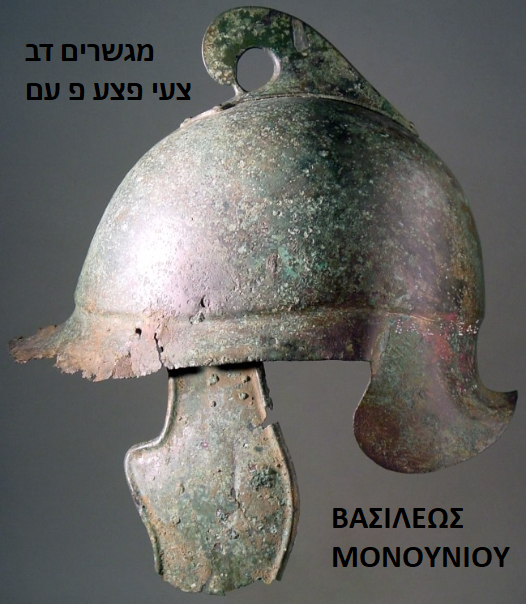Derite, this was shared by you.
I think that it's quite interesting how the name of Dardanian king is identical to Odrysian prince Monunius son of Berisades/Peresadyes, not only that, Hammond said that Bardyllis came from Peresadyes tribe. Same name can also be attested among Spartokid Kings of Black Sea:
https://en.wikipedia.org/wiki/Paerisades_III.
Hammond also said that Enchelei/Sesarethi either co-ruled or were from Peresadyes themselves. I find it strange the King of Dardanians to be buried in Selce, South Albania. He must have had connections there.
If you connect the dots, the Psenicevo E-V13 which in historical time was known as Odrysian stronghold came via Mediana/Central Balkans there. I suspect a Bronze-Iron Age split.
And, also the helmet of Monunius looks interesting. It's a so called Thraco-Hellenic type of helmet. Notice the Phrygian-cape like style of the helmet, but his was quite minimal and more elegant IMO.
Just some small pieces of puzzle which i think cannot be coincidence.
If Thracian is somehow a balkan yamnaya derived language also, then maybe Dardanian and Thracian had a common ancestor that split in MBA-LBA, but something doesn't add up tbh here.
I agree with Riverman that channeled ware must have had E-V13 as one of the dominant lineages, its the only large scale movement in that timeframe that fits to explain the LBA-EIA EV13 expansion.
I don't buy Bruzmi's version of events that E-V13 was simply an isolated minority lineage until after the Roman empire where it then had massive founder effect in Balkans, Italy, etc.
Viminacium being 47% EV13 fits better the Riverman model of previous cremators that suddenly pop up after being romanised/christianised and abandoning cremation.
So which language did the chanelled ware spread? If it wasn't proto-Thracian/dacian and these were earlier established by corded ware or something else, could it have been that channeled ware spread some other language that fizzled out?
I.e, in greece we do see cremation popping up everywhere, but there is no real replacement of the Greek language.
Could it be like the situation of the 10,000 vandals in africa that couldn't keep their own language?
Did Channelled ware spread ev13 across the balkans but not make a dent linguistically in more firmly rooted places?
From Bouzek:
Some groups from SE part of Central Europe arrived at least to Macedonia,
where their so-called Lausitz Ware derived from that of the Čaka culture in
SW Slovakia (fig. 27) and western Hungary (AAE 190–191). The Balkan tribes
invaded Troad (Bithynia, Mysia) and Phrygia. The former had their previous
roots in northern and eastern Thrace, the latter more westwards, in the area
of later Brygi and Paeonians (HG 66–69, AAE 180–200; GAE 87–100; fig. 26).
Some of the warrior groups coming via Italy and also those coming by
land settled, in many places they either became the landlords, or developed
a kind of symbiosis with the old elites.
This situation resembles much what happened at Great Migrations period. Not too many people were needed
to create a military force in the small wars. According to the Salic laws, as
unauthorized bands were considered those consisting of less than 16 men, the
groups of 16 or more men were already classified as armies.
10 000 Vandals founded their empire in North Africa, as did a similar
number of Visigoths in Spain; Ostrogots and Langobards in Italy were also
not much more numerous. None of them preserved their language, and their
rule was based on some compromise with the earlier traditions on the lower
level. Their bands were in the system of Gefolgschaft composed of able warriors, in the Great Migration period even after the defeat the good warriors
accepted often a new tribal identity.
These groups apparently were too small, and coming with essentially
less women than men. They no much chance to preserve their identity for
long. Even later the Slavonic migrants became graecised in most parts of
southern and central Greece, and the same happened with the Albanians in
these territories, not mentioning the descendants of the Francs, Venetians
and Genovans. The LBA groups were apparently smaller, but they got their
chance in the time of famine and interior struggle."
Somehow Channelled ware and EV13 are tied into a knot in this problem, and the only way to untie it is to be precise with establishing which group brought which tribal names (which can persist even after losing original language), etc.








